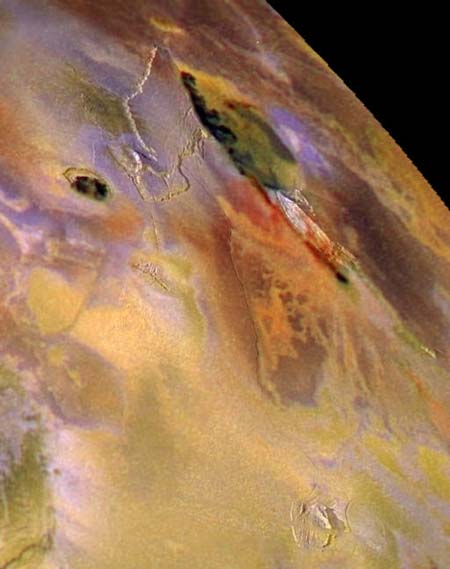Astronomy Picture of the Day
Discover the cosmos! Each day a different image or photograph of our fascinating universe is featured, along with a brief explanation written by a professional astronomer.

Credit: Galileo Project, SSI, University of Arizona, JPL, NASA |
Explanation: The Galileo orbiter's flyby of Io last November captured an unusual part of Jupiter's volcanic moon. From 26,000 kilometers away, Zal Patera was found to be a cauldron of flowing lava, gaseous vents, and tremendous peaks. Red lava can be seen in the above picture erupting along the base of the volcanic caldera, while cooling black lava lines the edge of a volcanic plateau. Shadow lengths indicate that the top of Zal Patera towers nearly 5 kilometers over Io's molten surface. Galileo zoomed past Io again last month, and has begun beaming back images taken only 200 kilometers over Io's surface. |
< | Archive | Index | Search | Calendar | Glossary | Education | About APOD | >
Authors & editors:
Robert Nemiroff
(MTU) &
Jerry Bonnell (USRA)
NASA Technical Rep.:
Jay Norris.
Specific rights apply.
A service of:
LHEA at
NASA/
GSFC
&
Michigan Tech. U.